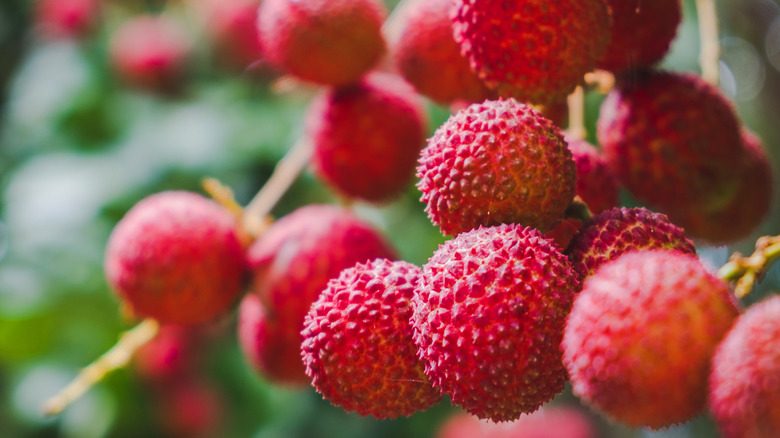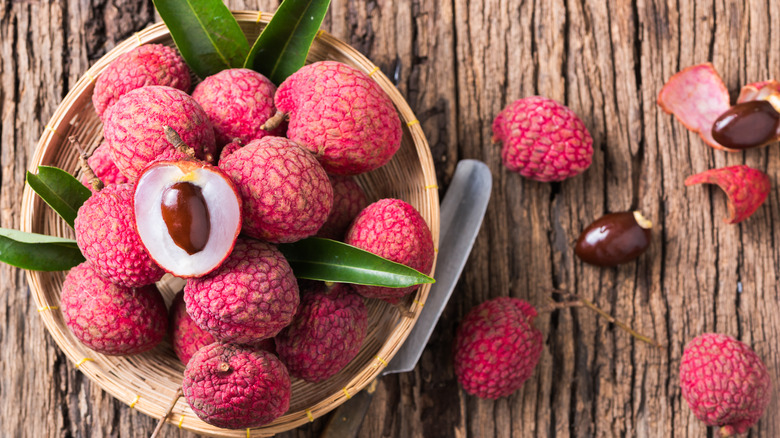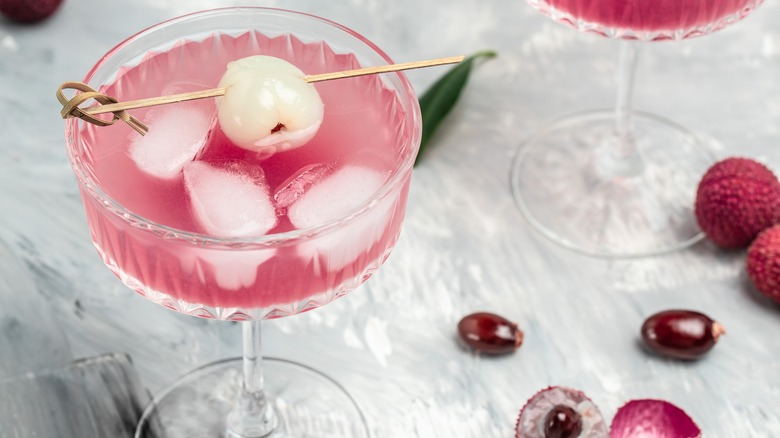When Lychees Are Perfectly In Season (And Where To Find Them)
There's a whole list of fruits you can count on being available at grocery stores at any time of the year, but lychees aren't one of them. These funky-looking fruits, which are native to southern China, are now also grown in states like California, Hawaii, and Florida, but the fresh fruits are only available for a short time. Specifically, they're harvested between mid-May and early July. Moreover, unlike many fruits that are picked at maturity then left to ripen, lychees are picked when they're ready to eat.
If you want to get your hands on lychees, your best bet is to mark your calendar and keep an eye on your local international and Asian grocery stores. But even then, selecting the ideal lychee takes knowledge and discernment. This fruit is particular — it requires a subtropical climate with a cold (but not too cold) winter, and trees can take around a decade to actually start bearing fruit. It's no surprise, then, that getting the best lychees requires a little forethought.
How to pick fresh lychees (and what to do if none are available)
The first step to buying lychees is finding a store that sells them. Asian and international grocery stores are your safest bet. If you lack these, check the international aisle of your local supermarket. Since lychees are picked when they're ripe, you should be careful to select those that are at their peak. Look for lychees that are only slightly soft – if they're too soft, they might be past their prime. They should ideally have a bright red color, but if they're starting to look a little brown, that's actually all right. This is a result of skin dehydration that doesn't actually impact the fruit inside.
Lychees are also delicate. If there's a massive pile, you should keep in mind that they likely weren't handled with the care they require. Once home, you should keep them in a sealed container in the fridge. Again, if they start to turn a little brown, don't worry, they're still fine to eat. Given their delicate nature and short season, you might opt for other forms of lychee. Canned lychees are widely available in international and Asian grocery stores, or online (purees and syrups can also often be found in such places). These are a great option if you're making cocktails like a lychee mule.
How to eat and serve lychee
Lychees are easy to eat. When ripe, the red outer shell can be removed without special tools (although you might want to puncture it with a knife first), revealing the white fruit. Letting guests peel the fruit themselves is a fun time, but be sure to remind everyone that there is a decently-sized and inedible pit inside the fruit.
Lychees are a great way to elevate your next smoothie with fresh and fruity flavor. They can also be used to make a light and refreshing sorbet, particularly when paired with flavors like lime, ginger, coconut, mint, and rose. They're a brilliant addition to desserts like panna cotta, and can be used to add a tasty tartness to dishes like sweet and sour pork, roast duck, curried noodles, and red or green chicken curry.
Lychees truly shine when they're included in drinks of all kinds. If you're looking to quickly and easily upgrade store-bought lemonade, try adding lychee pieces, puree, or syrup. Lychee is just as good in sangria, bubble tea, mojitos, pina coladas, martinis, and even gin and tonics. Once you start experimenting with this flavorful fruit, you'll never want to stop.


